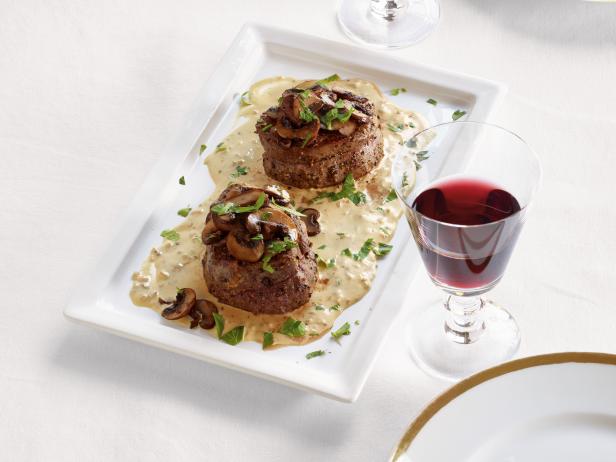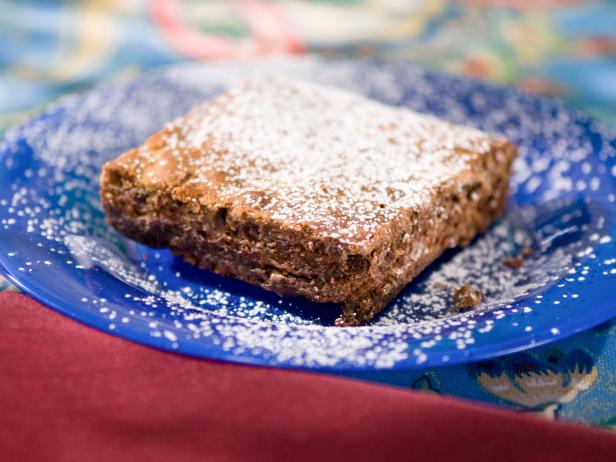**Yaki Onigiri: A Savory Treat to Delight Your Taste Buds**
Yaki onigiri, also known as grilled rice balls, is a delightful Japanese dish that tantalizes the taste buds with its harmonious blend of flavors and textures. These delectable rice balls are crafted using high-quality Japanese rice, skillfully cooked to achieve the perfect balance of tenderness and chewiness. Each rice ball is lovingly molded into a triangular or round shape, then brushed with a savory sauce and grilled to perfection. The result is a crispy, golden-brown exterior that gives way to a tender, flavorful interior. Yaki onigiri is a versatile dish that can be enjoyed on its own as a snack or served as a side dish to accompany a variety of main courses. This article offers a collection of enticing yaki onigiri recipes that cater to diverse preferences, from classic to modern variations. Dive into the culinary adventure and discover the joy of creating these delightful grilled rice balls in your own kitchen.
YAKI ONIGIRI (GRILLED JAPANESE RICE BALLS) WITH PICKLED SHIITAKES
Onigiri, also known as omusube, are portable snacks, often sold in Japanese convenience stores, which are traditionally stuffed with salty, tangy fillings, then wrapped in seaweed. When grilled, glazed or cooked, they become yaki onigiri. In this version, adapted from "Vegan JapanEasy: Classic and Modern Vegan Japanese Recipes to Cook at Home" by Tim Anderson (Hardie Grant, 2020), a little bit of the pickled shiitake filling goes a long way. (The recipe makes extra, which you can keep refrigerated to add to stir-fries, ramen or even omelets.) You could also stuff these with finely chopped kimchi, Japanese pickles, sautéed greens or nothing at all. Available online or at most Japanese supermarkets, an onigiri mold makes for sleek shaping, but, with a little practice, you could also form the shape by hand, or simply roll the rice between your palms into balls. For hot yaki onigiri, brush them with the miso glaze, which will form a delightful crackly, caramelized crust when broiled.
Provided by Alexa Weibel
Time 1h
Yield 6 to 12 onigiri (2 to 4 servings)
Number Of Ingredients 15
Steps:
- Prepare the filling, if using: Add the shiitakes to a medium saucepan and top with cold water by a couple of inches. Stir to combine. Heat over medium-low just until bubbles start to break the surface. Cover and set aside to rehydrate for about 30 minutes. Once the mushrooms are tender, transfer them to a cutting board and thinly slice. (Save the mushroom stock for another use.) Toss sliced mushrooms with chile flakes, then transfer to a jar or lidded container. Top with soy sauce, mirin and rice vinegar. Cover and refrigerate. Let pickle at least 2 hours to develop flavor. They're even better after a few days and will keep refrigerated for up to 6 months.
- After the mushrooms have pickled (if using), prepare the rice: Add the rice to a medium saucepan with a tight-fitting lid. Rinse the grains to remove any excess starch, and cover rice with cold water by 1 or 2 inches. Swish them around with outstretched fingers, then drain the rice, repeating the process three or four times until the water goes from milky to just slightly cloudy.
- Pour 1 3/4 cups/420 milliliters water into the rinsed, drained rice, and give the rice a stir to distribute evenly. If time permits, let the rice soak for 15 to 30 minutes, which will help the grains cook even more evenly.
- Heat the rice over high and bring to a boil, stirring occasionally, about 5 minutes. Once the mixture comes to a boil, cover it with the lid and reduce the heat to low or medium-low. You want a low heat that is still high enough to hear the rice bubbling. You should be able to see some steam escaping from the lid; turn the heat up slightly if necessary. Set a timer for 15 minutes and let it cook, undisturbed. (No peeking, or you'll lose precious moisture!)
- After 15 minutes, turn off the heat and gently fluff the rice using chopsticks or a fork. Put the lid back on and let sit for another 5 to 10 minutes to finish cooking in the residual heat. Tip the rice onto a baking sheet to cool slightly.
- While the rice cooks, prepare the miso sauce, if making hot, glazed yaki onigiri: In a small bowl, whisk together the miso, sesame oil, mirin, sugar, sake and rice vinegar until smooth and sugar has dissolved.
- Once the rice has cooled enough to be handled comfortably, brush a baking sheet lightly with neutral oil, so the onigiri don't stick, and prepare a bowl of water for rinsing your hand to prevent the rice from sticking. Form your onigiri. If using Japanese onigiri mold, press about 1/3 cup cooked rice in the bottom, press an indentation in the center to stuff with about 2 teaspoons of finely chopped filling, then top with another 1/3 cup layer of rice, pressing down with the top piece of your rice mold. Transfer onigiri to the greased baking sheet.
- If working by hand, you'll want to grab a large handful of rice, compress the rice into a ball in the palm of your hand, then press the sides to form a triangular shape, flattening it into a triangular patty. (This shaping process requires some finesse, but you can also form rounded balls and simply compress them into pucks.) Transfer to the prepared baking sheet, rinsing your hands as needed.
- If stuffing with mushrooms or other fillings, you'll need only a few finely chopped tablespoons: 1 to 3 teaspoons per onigiri, depending on the size of your rice rolls. Compress the first handful of rice in your palm. Add the filling to the center and fold the rice up the sides. (You want to make sure the filling is just in the center portion. If the rice doesn't create a seal, the onigiri will fall apart.) Top with another layer of rice and compress on all sides to form onigiri in the desired shape.
- Garnish with sesame seeds and wrap with a small rectangle of nori, if using, and serve immediately. (Onigiri can be prepared 1 day in advance, wrapped in plastic and refrigerated, but should come to room temperature before being consumed.)
- If making yaki onigiri, brush the top of the onigiri with miso sauce. Transfer to the oven and broil until the glaze forms a crust that is golden and lightly browned in spots, rotating if necessary, about 5 minutes. Carefully slip a flat spatula underneath to flip yaki onigiri; brush on the other side and broil until glazed on the second side, another 5 minutes. Garnish as you would onigiri.
YAKI ONIGIRI
Provided by Tadashi Ono
Categories Rice Backyard BBQ Grill Grill/Barbecue Party Advance Prep Required
Number Of Ingredients 0
Steps:
- Use 1 cup of hot (or warm) cooked Japanese short grain rice per serving. Add the rice to a small bowl (like a cereal bowl) just big enough to hold it. Jiggle the bowl, moving it in a flat, circular motion, like the motion of a hula hoop, until the rice forms into a ball on its own-a neat kitchen trick Tadashi's mom taught him. This motion packs the rice so it holds together when it grills.
- Wet your hands and place the ball of rice between your cupped palms. Now squeeze, flip, and turn the rice ball several times to form it into a triangular shape. This motion takes a little practice, but after a few yaki onigiri, you'll get the hang of it. Make sure not to compact the rice too tight; you want it to just stick together.
- Grill yaki onigiri over medium heat. If the fire's too hot, the rice will burn. We like to place the yaki onigiri along the cooler edges of a grill while other foods cook in the hotter center. Watch the rice carefully while it grills; perfect yaki onigiri need constant attention.
- How to Cook Japanese Rice
- There are two basic ways to prepare Japanese rice: rice cooker or stovetop. If you have an electronic rice cooker, wash and rest the rice as we describe below, then follow cooker instructions. To prepare rice on the stovetop, an enameled cast-iron or cast-iron pot works best because these heavy pots do such a great job distributing heat.
- Makes 4 cups of rice 2 cups Japanese short-grain white rice 2 cups water
- Wash the rice to remove surface starch by placing the rice in a bowl, filling it with water, and swirling the rice with your hand. Drain off the milky liquid. Repeat 3 or 4 times until the water becomes clear enough to see the rice. Wash quickly; the entire process should take no longer than 3 minutes (soaking the rice in the washing water too long can cloud its flavor). Strain the rice into a colander, cover it with a clean kitchen towel, and let it rest for 15 minutes, so the grains naturally rehydrate, which helps them cook evenly.
- Add the rice and 2 cups of water to a pot. Cover and bring to a boil over high heat. Decrease the heat to medium and cook 10 minutes, until you smell a beautiful rice aroma in the steam escaping from the pot. Be careful not to overcook, or you'll burn the rice. Turn off the heat and let the covered pot sit for 10 minutes, a critical step that completes the cooking process. Uncover the pot, gently stir the rice with a large spoon to fluff it up, and it's ready.
Tips:
- Cook the rice perfectly: The quality of your yaki onigiri depends heavily on the rice, so make sure it's cooked properly. Use Japanese short-grain rice and follow the package instructions for cooking.
- Use high-quality ingredients: Fresh, high-quality ingredients will make your yaki onigiri taste better. Look for flavorful fillings and nori that's crispy and flavorful.
- Season the rice: Don't forget to season the rice with salt and other seasonings before shaping it into triangles. This will help enhance the flavor of the yaki onigiri.
- Use a variety of fillings: There are endless possibilities when it comes to fillings for yaki onigiri. Experiment with different ingredients like grilled salmon, umeboshi plums, or vegetables.
- Cook the yaki onigiri over medium heat: Cooking the yaki onigiri over medium heat will help prevent them from burning and ensure that they're cooked evenly.
- Enjoy your yaki onigiri fresh: Yaki onigiri is best enjoyed fresh, so try to eat them as soon as possible after they're cooked.
Conclusion:
Yaki onigiri is a delicious and versatile Japanese snack or meal that can be enjoyed for breakfast, lunch, or dinner. With its crispy exterior and flavorful fillings, it's a satisfying and portable option that's perfect for busy people on the go. Experiment with different fillings and seasonings to create your own unique yaki onigiri recipes.
Are you curently on diet or you just want to control your food's nutritions, ingredients? We will help you find recipes by cooking method, nutrition, ingredients...
Check it out »
You'll also love













